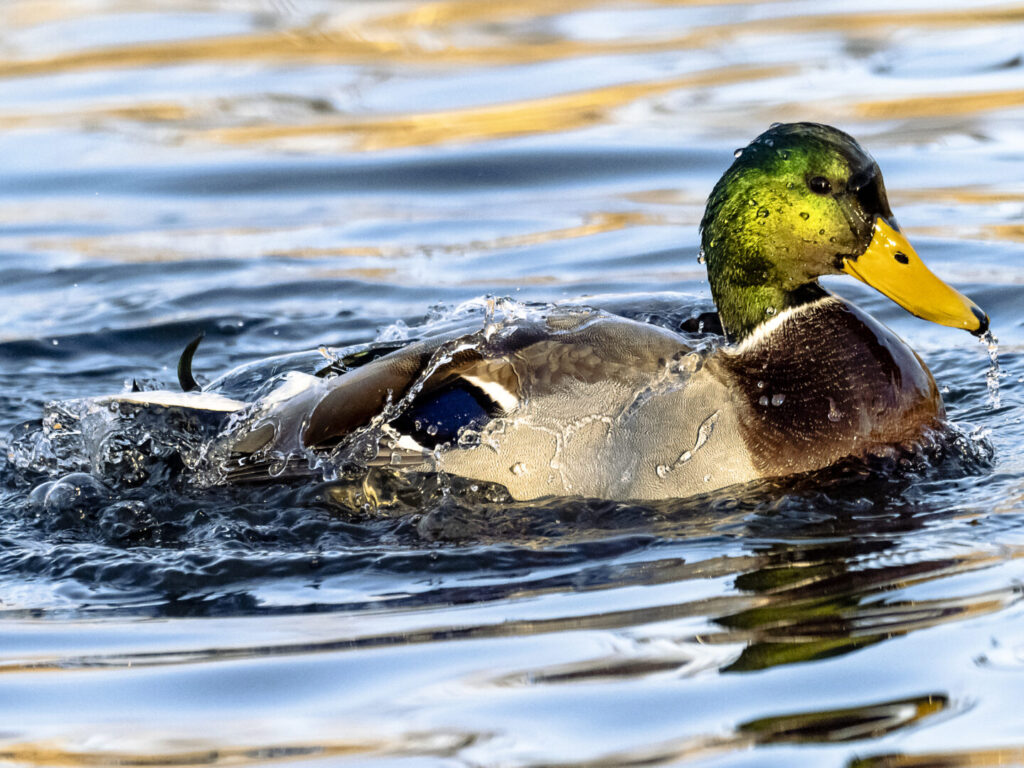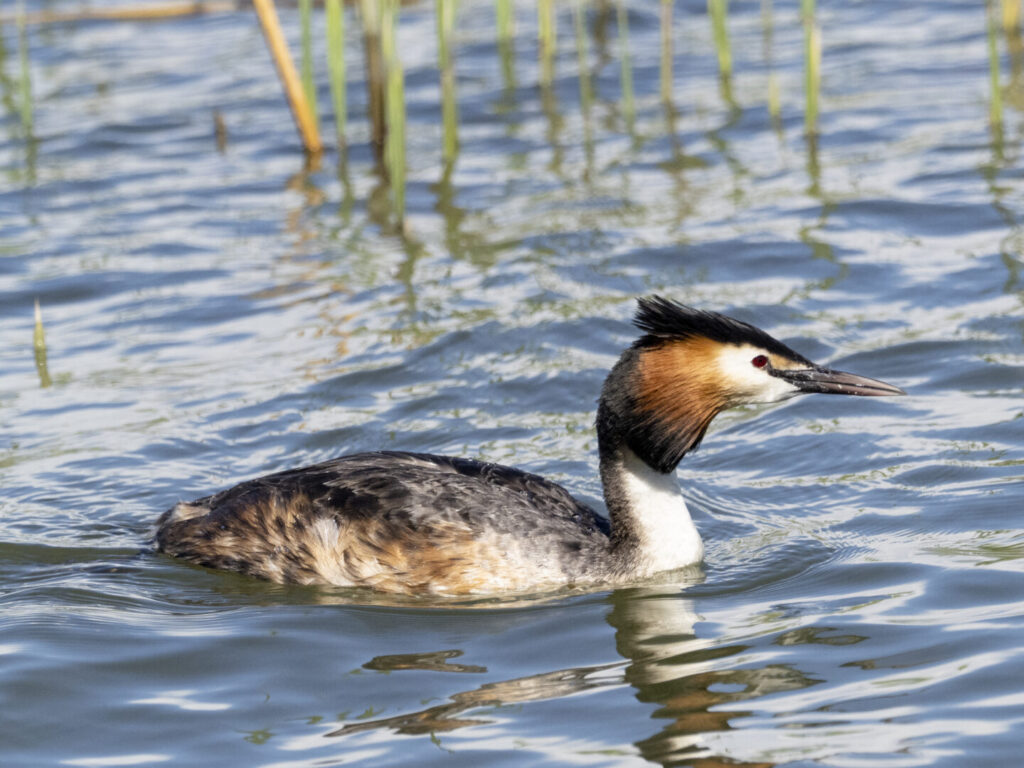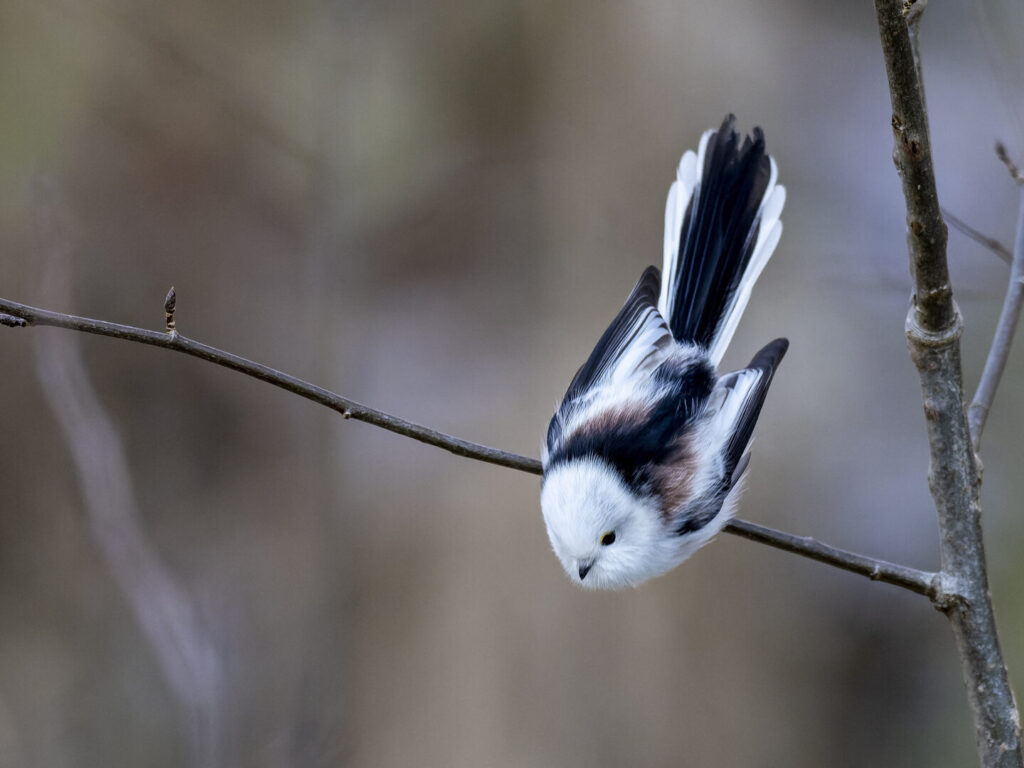Birdwatchers have met more than 100 different species around the surface, reeds, meadows and surrounding parks. Lake Arbi has an important role in the local landscape, and due to this collage of different habitats there is place for both, aquatic and terrestrial species.
Right next to you, on the shores of the Arbi Stream, you can probably notice a flock of mallards (Anas platyrhynchos). Please don’t feed them bread, it is not healthy for them. Instead give them some grated vegetables, which is more suitable. Amongst the wintering mallards, even the beautifully coloured Eurasian teal (Anas crecca) and the blue-beaked wigeon (Anas penelope) can be seen.

On the lake, one local nesting species can be found in the reeds: the great crested grebe (Podiceps cristatus). In search of food, common swifts (Apus apus) and common house martins (Delichon urbicum) are hovering around. Also, some hawks can be seen.

In the small wooded area next to you flocks of fluffy white-coloured long-tailed tits (Aegithalos caudatus) can be found during late-autumn, winter and spring. During an evening walk in wintertime one can hear the mating calls of the male tawny owls (Strix aluco). Whereas in springtime one can see the young chicks of the great spotted woodpecker (Dendrocopos major) looking out from a hollow on a pinetree. Even black woodpeckers (Dryocopus martius) can be found in the area, especially in the wooded areas, although it is more likely to hear than see them.

Closer to the human buildings you can meet and find nesting some great tits (Parus major), white wagtails (Motacilla alba) and European pied flycatchers (Ficedula hypoleuca). In urban environments, and also in Elva, western jackdaws (Corvus monedula), rooks (Corvus frugilegus), and hooded crows (Corvus cornix) are common.
Merry birdwatching!
Author: Randel Kreitsberg
